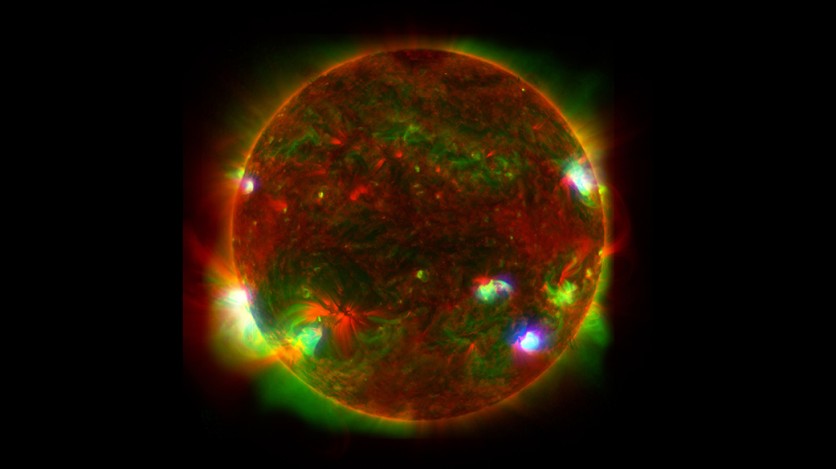The Sun is one of the brightest objects in space but even with all of its shining glory, the naked eye cannot see some of its lights.
But now, we can see its high-energy X-rays ejected by the hottest material from the solar atmosphere, thanks to the new images of NASA's Nuclear Spectroscopic Telescope Array (NuSTAR).

Red, Blue, Green Light
The composite image's blue light represents data from the NuSTAR paired with green hues from the X-ray Telescope (XRT) observations on the Japanese Aerospace Exploration Agency's Hinode mission.
Meanwhile, the red portions of the image represent data from the Atmospheric Imaging Assembly (AIA) on NASA's Solar Dynamics Observatory (SDO).

NASA notes that NuSTAR has a relatively small field of view. This means that it does not see the entire Sun from its position in our planet's orbit. Hence, the telescope's view of the giant star is only a mosaic of 25 images captured in June 2022.
NuSTAR has only detected the high-energy X-rays at a few specific spots in the Sun's atmosphere. Hinode's XRT saw low-energy X-rays, while SDO's AIA captured ultraviolet light coming from the entire face of the Sun.
Corona Mystery
NuSTAR's observations of the Sun may aid scientists in shedding light on the mystery of the Sun's outer atmosphere, corona, on why it can reach over a million degrees making it 100 times hotter than the solar surface.
Scientists have been perplexed by this because the Sun's radiation radiates outward from its center. NASA said this is comparable to a fire where the air is 100 times hotter than the flames.
But NASA adds that one of the probable causes of the corona's heat could come from nanoflares, tiny eruptions in the Sun's atmosphere. Even though nanoflares are substantially smaller, it still emits material hotter than the corona's average temperature.
NuSTAR can detect light from the high-temperature material anticipated to be created when a lot of nanoflares occur near one another, even though individual nanoflares are too faint to discern in the Sun's blinding glare.
This capability enables physicists to study nanoflares' energy release mechanism and frequency. These observations were made during NASA's Parker Solar Probe's 12th travel to the Sun, or perihelion, the closest encounter to the large star in spacecraft history.
Observations from the NuSTAR telescope help scientists to link activity observed remotely in the Sun's atmosphere with solar environment samples retrieved from the probe.
Related Article : NASA Moon Lander Competition: Blue Origin and Northrop Grumman Go Head-to-Head for Crewed Lunar Transportation

![Apple Watch Series 10 [GPS 42mm]](https://d.techtimes.com/en/full/453899/apple-watch-series-10-gps-42mm.jpg?w=184&h=103&f=9fb3c2ea2db928c663d1d2eadbcb3e52)



